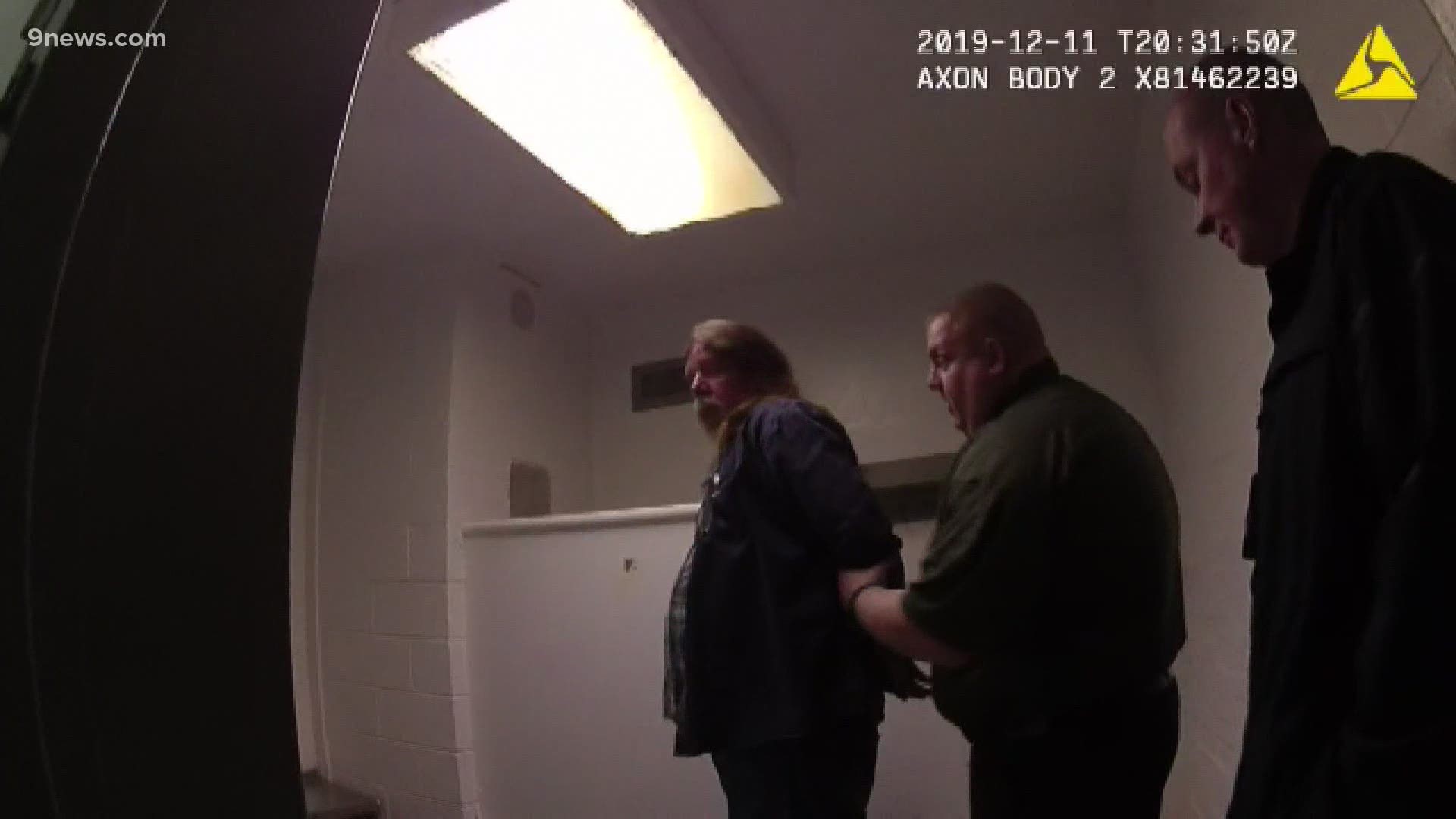COLORADO, USA — A single conversation two years ago has so far resulted in closure in at least five decades-old cold cases in Colorado through the use of genetic genealogy.
"Mitch came to me and said, 'Mike would you be willing, with your board, to fund five pilot programs around cold cases and genetic genealogy'," said Metro Denver Crime Stoppers Board President Mike Mills. "I said, 'Mitch, that sounds great.'"
Mitch Morrissey is a former Denver District Attorney who currently runs United Data Connect (UDC), a company that specializes in genetic genealogy, which uses DNA and historical records to infer biological relationships between individuals.
> The video above explains how the technology was used to solve Helene Pruszynski's 1981 murder.
Mills and the Crime Stoppers board agreed at the time to commit $20,000 to the first five pilot cases.
"Sylvia Quayle was one of the first five," Mills said during a press conference on Feb. 25 to announce an arrest in her 1981 killing. "Happily now we have solved all five cases."
Sylvia Quayle


The 34-year-old woman was brutally attacked and sexually assaulted inside her Cherry Hills Village home and was found dead by her father on the morning of Aug. 4, 1981.
On Feb. 25, 2021, more than 39 years after her death, police announced that they arrested 62-year-old David Dwayne Anderson in Nebraska. The case was cracked after new testing was done on DNA that was found at the crime scene.
"We took that [DNA sample from the crime scene] and we got it sequenced, which is a different form of DNA analysis than you're used to in criminal cases," said Morrissey. "We got it sequenced and once we sequenced it then we uploaded that data to two different general open source websites Family Tree DNA and GED Match.
From there, detectives begin looking for potential relatives of the suspect they were for and started tracking down potential leads.
"It is extensive background work, we use DNA for that, we use all kinds of newspapers, public records to find out about these people and who they're related to and eventually get it down to one suspect."
In this case, that one suspect turned out to be Anderson, and prior to his arrest investigators conducted surveillance on him and collected two bags of trash he had thrown out.
A can of Vanilla Coke and several other items were among that trash and they were collected and tested for DNA. A sample of DNA found on the coke can was a match to the DNA from the crime scene, investigators said Thursday.
Investigators began working on Quayle's cold case after solving another cold case in Jefferson County in 2019.
"There's a young DNA analyst, up there, she used worked to work in Denver, and she said Mitch, if you have a slot I worked on a case, when I worked with CBI, it's a homicide down in Cherry Hills and if you would contact Detective [Lenny] Abeyta, I'm sure he would love your help," said Morrissey.
Jeannie Moore


Jefferson County sheriff’s investigators in 2019 identified Donald Perea, who died in 2012 due to health-related issues, as the suspect in the 1981 murder of an 18-year-old woman whose body was discovered by picnickers in Genesee Park.
RELATED: 'God took him before we got the chance': Suspect identified in 1981 killing of 18-year-old woman
Investigators also said Perea, a convicted rapist, sexually assaulted Jeannie Marie Moore, who disappeared on Aug. 25, 1981, after leaving home to work at a gas station in the 1300 block of Wadsworth Boulevard.
Five days later, Moore's body was found by picnickers in Genesee Park south of Interstate 70, according to CBI. An autopsy showed that she died from blows to the head.
Helene Pruszynski


Helene Pruszynski, 21, was found dead in a Douglas County field on Jan. 17, 1980, the day after she disappeared. Her killer tied her hands behind her, sexually assaulted her and stabbed her repeatedly in the back.
The man who killed her, James Clanton. was arrested in Florida in December 2019 and within two months had pleaded guilty.
Her case had been re-investigated several times over the years and was unsolved for nearly four decades when investigators used a new tool known as “genetic genealogy” to identify Clanton.
Using DNA recovered at the crime scene, investigators focused first on finding relatives which included a woman in Georgia.
That search eventually led them to Clanton, who had changed his name in Florida two years after Pruszynski's murder, according to court documents.
He was originally known as Curtis Allen White.
Clanton was arrested Dec. 11, 2019, after Douglas County sheriff’s investigators surreptitiously collected a beer mug from a bar he had visited and had it tested for DNA.
Tangie Sims


A man who died in 2008 has been identified as the person who killed a woman in Aurora in 1996, according to the Aurora Police Department.
The body of 25-year-old Tangie Sims was found in an alley in the 1200 block of Iola Street around 8 a.m. on Oct. 24, 1996. She was left there after being violently assaulted and stabbed, APD said.
Using advances in DNA technology, APD detectives found an immediate member of the suspect's family who cooperated with the case. Eventually, they were able to confirm Wesley Backman — who was 41 years old at the time of the murder — as the suspect.
Backman passed away in 2008.
Becky Redeker (Jane Doe)


For decades a woman's body found in the Pike and San Isabel National Forests in southwest Douglas County in the summer of 1993 was unidentified and listed a Jane Doe.
But in 2020, she was finally identified as a 20-year-old Becky Redeker, of Colorado Springs.
She had been reported missing, however, the condition of her remains made it difficult to identify her. A cold case detective received a tip in July 2020 and then DNA and genetic genealogy were used to make a positive ID.
While the technology helped identify Redecker as the victim, her killer has not been found.
Anyone who may have information is asked to contact DCSO Detective Mark O'Harold at 303-784-7815
Callers can also remain anonymous by contacting Metro Denver Crime Stoppers. They've increased the reward in the case to up to $10,000. Anyone with information can call 720-913-7867. Tips can be submitted online at Metro Denver Crime Stoppers website.
2002 Arvada sex assault
Brent W. Bloomquist, 63, was arrested in July 2020 in connection with a 2002 sexual assault involving a victim in her 60s, according to the Arvada Police Department (APD).
The victim in the cold case was walking home at night near 80th Avenue and Hoyt Way in May 2002 when she was grabbed and forced up against a fence, police said. She made a police report and DNA evidence was collected from the scene.
APD said Arvada detectives partnered with the UDC to develop a familial DNA profile that eventually led investigators to Bloomquist, who was arrested on a warrant for sex assault and kidnapping.
Just last month, Bloomquist pleaded guilty to kidnapping and attempted sexual assault, both felonies
Additional cases
Due to the overwhelming success of the partnership between UDC and Crime Stoppers, they expanded beyond those five pilot cases to nine total so far.
"So seven of nine so far [have been solved] with hopefully some good news on the last two very soon. That's within two years," Mills said. "Our partnership with UDC has been tremendous, we hope to continue to do this," said Mills.
Crime Stoppers is a non-profit organization that relies on donations to the public to support its mission.
"If this is something that is of interest to you reach out to Metro Denver Crime Stoppers and donate towards cold cases. We've shown the success has been great."
Crime Stoppers is a non-profit organization that relies on donations to the public to support its mission.
Metro Denver Crime Stoppers
Crime Stoppers is a non-profit organization that relies on donations to the public to support its mission. It works by assigning a code to people who anonymously submit a tip. Information is shared with law enforcement, and Crime Stoppers are notified at the conclusion of the investigation.
From there, an awards committee reviews the information provided and, if the information leads to an arrest, the tipster will be notified. Rewards can be collected using the code numbers received when the tip was originally submitted.
> More information about Metro Denver Crime Stoppers can be found here.
> Additional Crime Stoppers bulletins can be found here.
SUGGESTED VIDEOS: Investigations from 9Wants to Know

